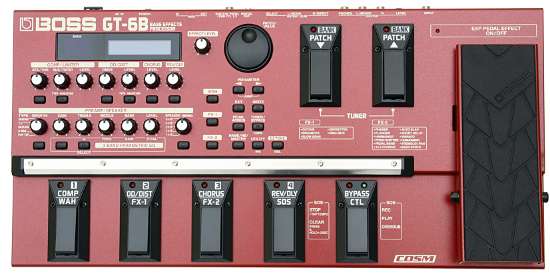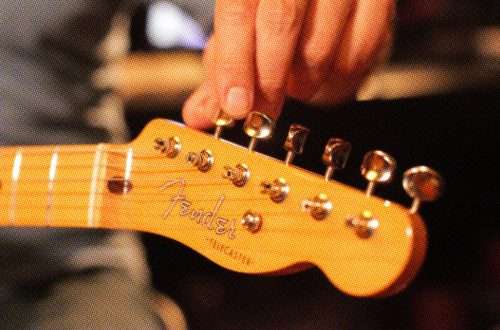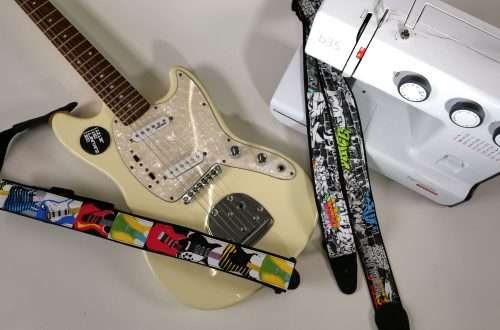
How to choose processors and effects for bass guitars?
Effects and processors (also known as multi-effects) are what sets the sound of instruments apart from the crowd. Thanks to them, you can surprise the audience and diversify the game.
Single effects
Bass effects come in the form of floor pegs that are activated with the foot. Each of them has a different role.
What to look for?
It is worth seeing how many knobs have a given effect, because they determine the number of tonal options available. However, do not avoid cubes with a small amount of knobs. Many effects, especially those based on older projects, only have a limited palette of sounds, but what they can do, they do best. It is worth paying special attention to the effects that are dedicated to bass guitars. Most often these will be cubes with the word “bass” in the name or with a separate bass input.
An additional feature of each effect may be the use of “true bypass” technology. It has no effect on the sound when the pick is on. It only takes effect when it is turned off. This is true when there is a wah-wah effect between the bass guitar and the amplifier, for example. When we turn it off, and it will not have “true bypass”, the signal will pass through it, and the effect itself will slightly distort it. Given “true bypass”, the signal will bypass the components of the effect, so that the signal will be as if this effect was completely absent between the bass and the “stove”.
We divide the effects into digital and analog. It’s hard to say which are better. As a rule, analog makes it possible to obtain a more traditional sound, and digital – a more modern one.
Overdrive
If we want to distort our bass guitar like a Lemmy Kilmister, nothing could be easier. All you need to do is get a distortion dedicated to the bass, which will allow you to achieve predatory sounds. Distortion is divided into fuzz, overdrive and distortion. Fuzz allows you to distort the sound in a way known from old recordings. Overdrive covers the clean sound of the bass while keeping a slightly clearer tonal character. Distortion completely distorts the sound and is the most predatory of them all.
Octaver
This type of effect adds an octave to the base tone, broadening the spectrum we play in. It makes us more
audible, and the sounds we make become “wider”.
Phasers in flanges
If we want to sound “cosmic”, this is the best choice. A proposition for those who want their bass to be completely changed. Playing these effects takes on a completely different dimension… literally a different dimension.
Synthesiser
Did anyone say bass guitars can’t do what synthesizers do? Nothing could be further from the truth, any electronic bass sound is now at your fingertips.
Chorus
The specific sound of chorus effects means that when we play the bass, we hear its multiplication, just as we hear many slightly different voices in the choir. Thanks to this, the sonic spectrum of our instrument is very broadened.
Reverb
Reverb is nothing but reverb. It will allow us to achieve the characteristics associated with playing in a small or large room, and even in a large hall.
Delay
Thanks to the delay, the sounds we play come back like an echo. It gives a very interesting impression of space thanks to the multiplication of sounds in selected time intervals.
Compressor, limiter i enhancher
The compressor and derived limiter and enhancer are used to control the volume of the bass by equalizing the volume levels of aggressive and soft playing. Even if we only play aggressively, be gentle, they will still benefit us from this type of effect. Sometimes it just happens that we pull the string too weakly or too hard than we would like. The compressor will eliminate the unwanted loudness difference while improving the dynamics. The limiter makes sure that a too much tugged string does not cause an unwanted distortion effect, and the enhancer increases the puncture of sounds.
Equalizer
The equalizer in the form of a floor effect will allow us to accurately correct it. Such a cube usually has a multi-range EQ, allowing for individual correction of specific bands.
Wah – wah
This effect will allow us to make the characteristic “quack”. It comes in two forms, automatic and foot operated. The automatic version does not require constant use of the foot, while the latter can be temporarily controlled at our discretion.
Looper
This type of effect does not affect the sound in any way. Its task is to remember the play, loop it and play it back. Thanks to this, we can play to ourselves and at the same time play the lead part.
Tuner
The headdress is also available in the ankle version. This gives us the ability to fine tune the bass guitar even during a loud concert, without disconnecting the instrument from the amplifier and other effects.

Multi-effects (processors)
An interesting option for those who want to have all these things at once. Processors most often use digital sound modeling. The technique moves at a crazy pace, so we can have many sounds in one device. When choosing a multi-effect, you should pay attention to whether it contains the desired effects. They will have the same names as in individual cubes. Just like in the case of cubes, it is worth looking for multi-effects in which the word “bass” is named. A multi-effect solution is often less expensive than a multi-effect collection. For the same price, you can have more sounds than with picks. The multi-effects, however, still lose the duel with the cubes in terms of sound quality.

Summation
It’s worth experimenting. Thanks to the effects-modified bass guitar sounds, we will stand out from the crowd. It is no coincidence that they are liked by so many bass players all over the world. They are often a great source of inspiration.





